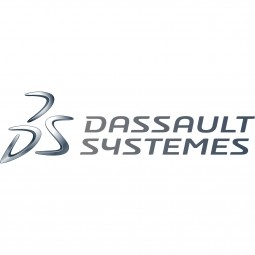Technology Category
- Application Infrastructure & Middleware - Event-Driven Application
Applicable Industries
- Cement
- National Security & Defense
Applicable Functions
- Product Research & Development
Use Cases
- Time Sensitive Networking
Services
- Training
About The Customer
MAC Design and Build is a family-owned, fully licensed, and insured contracting business that creates custom cabinetry, furniture, doors, and built-ins to support its home and business furnishing and remodeling company. The firm prides itself on delivering interior design, furnishing, and remodeling services that are limited only by the imagination and the client’s budget. By designing and creating unique pieces for customer spaces, MAC Design and Build provides greater flexibility and creativity than conventional interior design and remodeling companies that rely on standard, prefabricated cabinets, furniture, doors, and woodworks. The company tackles unique and challenging projects every day, and clients who struggle to capture their design vision using standard, prefabricated furnishings can work with MAC Design and Build to transform their dreams into reality.
The Challenge
MAC Design and Build, a family-owned contracting business, specializes in creating custom cabinetry, furniture, doors, and built-ins for home and business furnishing and remodeling services. The company prides itself on delivering unique interior design and remodeling services that are only limited by the client's imagination and budget. However, the company faced a significant challenge in accelerating the development of these custom pieces while simultaneously eliminating errors and reducing costs. The company initially used AutoCAD 2D design software for designing the cabinets and woodworks, which are at the core of the firm's business. However, the annual licensing costs of AutoCAD, roughly $1,200 for two seats, were too high for the company. They needed a more cost-effective 2D solution that could deliver the same capabilities as AutoCAD.
The Solution
MAC Design and Build decided to replace AutoCAD 2D software with DraftSight Professional 2D design software. After using the free version of DraftSight software for the first six months, the company chose to upgrade to DraftSight Professional software to take advantage of a host of extra time-saving shortcuts. The software was easy to learn and use, especially for those with AutoCAD experience, and provided all of the capabilities of AutoCAD at a fraction of the price. At roughly $200 for two annual licenses of DraftSight versus $1,200 for two seats of AutoCAD, the decision to implement DraftSight Professional software instead of AutoCAD reduced the company's annual 2D design application costs by 83 percent. The company was able to immediately start using DraftSight Professional software without any formal training due to its intuitiveness and similarity to AutoCAD.
Operational Impact
Quantitative Benefit

Case Study missing?
Start adding your own!
Register with your work email and create a new case study profile for your business.
Related Case Studies.

Case Study
System 800xA at Indian Cement Plants
Chettinad Cement recognized that further efficiencies could be achieved in its cement manufacturing process. It looked to investing in comprehensive operational and control technologies to manage and derive productivity and energy efficiency gains from the assets on Line 2, their second plant in India.

Case Study
Data Capture for Afghanistan Forces
Electronic equipments on the field of Afghanistan provided information on the status of the vehicle and to identify potential threats surrounding it to the British Force. The monitoring and interpretation of this data requires robust and sophisticated digitization for data capture and communication.

Case Study
Digital Transformation of Atlanta Grout & Tile: An IoT Case Study
Atlanta Grout & Tile, a Tile, Stone & Grout restoration company based in Woodstock, Georgia, was facing challenges with its traditional business model. Despite steady growth over the years, the company was falling behind the web revolution and missing out on the opportunity to tap into a new consumer base. They were using independent software from different vendors for each of their department information and workforce management. This resulted in a lot of manual work on excel and the need to export/import data between different systems. This not only increased overhead costs but also slowed down their response to clients. The company also had to prepare numerous reports manually and lacked access to customer trends for effective business decision-making.
Case Study
Enhancing Security and Compliance in Remitly's Global Money Transfer Service with Fastly
Remitly, an online remittance service, was faced with the challenge of securing its proprietary global transfer network. The company needed a security solution that could meet PCI requirements and protect customers' sensitive transactions through its mobile application. The solution had to be capable of defending against new and emerging attack types without impacting performance. Remitly also had to deal with irregular traffic patterns, such as a sudden spike in account transfers from a small network segment on the Pacific coastline of South America. The company needed to determine in real time whether such traffic indicated an attack or valid requests. A traditional web application firewall (WAF) would not be able to distinguish this traffic, potentially leading to customer frustration if the IP was blacklisted.

Case Study
Major Aerospace Company Automates Asset Management
The O&M division of an aerospace and global security company was using spreadsheets to manually track more than 3,000 assets assigned to students and staff. Maintaining audit trails for this high volume of equipment became increasingly time-consuming and challenging. The chore involved knowing precisely what equipment was on hand, what had been issued, its location and the name of the custodial owner of each item. Every aspect of this task was carried owner of each item. Every aspect of this task was carried out by individuals with spreadsheets. Manually documenting the full lifecycle of each asset added to the burden. This included tracking maintenance requirements and records, incidents and damages, repairs, calibrations, depreciation, and end-of-life data.








